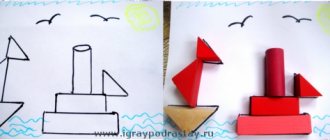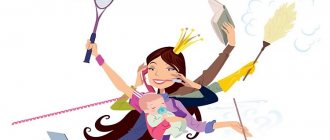Winter fun of the Slavs
Winter time is a special state of Nature. The earth rests under snow cover, trees fall asleep, and many inhabitants of forests and fields hibernate. A sunny day is much shorter than night. All natural processes slow down. This also affects the person. His life becomes calmer, more measured. By this time, the harvest has long been in the bins, and winter worries leave much more free time. On long frosty evenings, it’s so good to gather with the whole family around the fire and listen to wise legends and fairy tales.
But this time of year is impossible to imagine without daring winter fun, which invigorates the Spirit and gets the blood going. It's time to measure your strength, dexterity, and ingenuity. For our Ancestors, all holidays, entertainment and fun were filled with deep meaning. They helped a person to tune in to natural and cosmic rhythms, to feel part of the vast World.
It is no coincidence that during the coldest and harshest time of the year, Rus' always had the most fun and exciting holidays. They burst into everyday life with bright colors and noisy, crowded entertainment. Is it possible to imagine our winter without ice slides, painted sleighs, troika rides, taking snow towns, round dances and re-dancing?
Many of the winter activities of the Slavs go back more than one millennium. It is on the territory of our country that the most ancient skis, sleighs and skates were discovered. Thus, in the Pskov region, archaeologists found skis that are 4,300 years old, and in a peat bog near Syktyvkar, the front part of a ski with a figurine of an elk, 8 thousand years old, was preserved!
The history of sleighs goes back several thousand years; the oldest bone skates are about three thousand years old. And, of course, the Slavs have preserved many games and competitions related to skates, sleds and skis.
Many winter fun of the Slavs were in one way or another connected with the military art of our Ancestors. The capture of a snowy town, fist fights, and a game called “King of the Hill” were sometimes comic in nature, and sometimes resembled real military competitions.
"King of the Hill"
- one of the most ancient winter pastimes. It consisted in the fact that one of the strongest and most experienced fighters was rising to the top of the hill. He could defend himself either with his bare hands or with an ordinary staff. The attackers were armed with whips and ropes. Their task was to climb to the top themselves, but this was not easy, because the one who was chosen as “King of the Hill” could often hold back about a dozen besiegers.
Taking the snow town
- also one of the most ancient pastimes. In a comic version, the town was defended by girls. Armed with brooms and shovels, they bravely defended the fortress, covering the attacking guys with snow and pre-prepared snow shells. The attackers were divided into foot and horsemen; it is clear that in this version the role of horses also went to the male half. If someone was knocked off his horse, he was out of the game. The attackers' task was to destroy the snow fortress and capture the banner. The one who captured the banner received the right to kiss all the defenders, but rarely anyone succeeded, since the girls defended with all their might. The siege and defense of the town was accompanied by jokes, jokes, ditties, laughter and fun.
At times this game was as close as possible to real combat. In this case, only men participated. Then the ice fortress was built according to all the rules of fortification, and real horsemen attacked it. The defenders were allowed to fire blank guns to scare the horses.
Snowball fight
could be an independent game with clearly thought out rules.
For example, if a snowball hit the right shoulder, the player was prohibited from throwing with his right hand. If it was in the leg, you had to jump on one leg. Anyone who received a snow projectile to the body was eliminated from the game.
Fist fights
- another military game of the Slavs. It was distributed throughout the country. This is a well-known rule from there - do not hit people who are lying down. The most important thing was not to hold a grudge against the enemy, to fight “with a light heart.” There were many other rules, because it had to be a fair fight, a real competition of strength, dexterity, and the ability to act together.
Title : "Taking the Town"
got another old fun. It consisted in getting a prize from a high and smooth pillar. Boots, a piece of cloth or a caftan with mittens were usually attached to the top. The task was complicated by the fact that the pillar was doused with water in the cold. Climbing on an icy surface is indeed not easy. Sometimes, instead of pillars, flexible poles were installed, which bent under the weight of the daredevil, but this did not discourage those who wanted to test their strength and dexterity.
Slideshow
and today one of the favorite winter pastimes. But if in modern times this is considered children's entertainment, then in the old days young people also loved to ride down ice slides. But we rode in all sorts of ways! Not only sleighs were used, but also matting, skins, flat “ices”, “reels”, “stubs” hollowed out of wood, reminiscent of a trough or a dugout boat. Guys often steered the boat not while sitting, but standing on their feet, steering it like a real boat, using a stick or pole. Sometimes entire sleigh trains were made from several sleds. The sleds sometimes collided, turned over, the riders rolled into the snow, that was laughter and fun!
It’s impossible to imagine our winter without riding Russian troikas
, or simply
on a horse-drawn sleigh
. The sleigh was decorated with bright cloth, felt and even velvet. A painted bow and horse harness - with multi-colored ribbons, bells, and bells. Ribbons were woven into horse manes and decorated with silk tassels. The sleighs themselves were covered with fur coats and carpets. Everyone, from young to old, including the smallest children, rode on such a sleigh. Elderly people rode separately. The youth staged real races.
Another ancient and almost forgotten game - sticks
. It is believed that she became the prototype of bandy. The players had sticks made of flexible juniper. Only the ball had to be scored not into the goal, but into the ice holes. They played “sticks” on skates, which got their name because in former times they were decorated with carved images of horse heads. The first skates were made of bone, then wooden skates appeared, and later they began to be covered with iron runners. By the way, the word runners comes from snake, snake. As, in fact, sleigh, since in ancient Slavic “sleigh” just means snake. But both the runners themselves and the trail from the sleigh really resemble a snake trail.
A game called “Kubar”
. Kubar resembles a spinning top or a top; in fact, it is a cylinder cut downwards into a cone. The expression “roll head over heels,” that is, spinning, has survived to this day. So the kubar was rotated using a rope or twig. The players' task was to launch the header across the ice so that it would spin as long as possible. Sometimes there were competitions when players, controlling the head over heels with the help of a rod, avoided obstacles; the craftsmen could make the head over heels turn over in the air. Sometimes the kubari were pitted against one another, and the one that continued to spin won.
Rarely a winter holiday was complete without skiing
. By the way, the word “ski” comes from the Slavic “sneak away”, “crawling”, this word is at least 800 years old. Ski competitions were held in high esteem by our Ancestors.
Which is not surprising, since skis have been used in winter for a long time and everywhere. Even real ski battles are known to history; starting from the 15th century, there were even special ski military formations. By the way, skis of modern sizes and shapes were discovered in Ancient Novgorod; they date back to the 13th century.
Well, what would winter be without dancing and round dances! Some Slavic dances included real fighting movements, and such as the ancient dance “Skobar” turned into a real duel at a musical signal.
The winter fun of our Ancestors not only gave vigor and health, they cultivated strength, agility, courage, ingenuity, and the ability to act together... They continued the ancient Slavic traditions, and they themselves were part of the worldview of our grandfathers and great-grandfathers, our cultural heritage, which today, more than ever must be preserved and protected.
Recommendations for parents “Winter games and fun”
Recommendations for parents
"Winter Games and Fun"
It is no secret that for physical development and strengthening the body, children need to spend as much time as possible in the fresh air. And winter is no exception to this rule! And in order for the cold to be beneficial and not prevent the kids from enjoying their walk, they must be busy with interesting things. You just need to make sure that more intense movements are replaced by calmer ones.
When going for a walk with your children in winter, choose special games, tasks, and fun that are suitable for winter conditions. After all, only in winter there is snow, ice, and icy paths! Do not miss the opportunity to use snow buildings: slides, ice paths, shafts, ski slopes and special equipment for playing with snow: shovels, sleds with boxes, plywood sheets, plastic for buildings. Make sure that children are involved in the game: it not only develops and educates, but also warms up on a cold day.
So, for winter games and fun the following conditions are required:
- children themselves should take part in the activity;
- do not offer games where you need to run for a long time and intensely, so that children do not sweat (you need to limit the space for running);
— the game should not contain difficult movements (for example, jumping rope, obstacles, high jumps; gymnastic exercises, etc.);
- playing with snow should be done in warm weather, when the snow is soft;
— waterproof mittens are recommended for playing with snow;
— winter games, fun, and entertainment are held on a compacted area.
Games with snow.
Children learn to interact with nature and adapt to winter conditions. After all, only in winter can you use such a wonderful building material as snow in games. After a snowfall, adults shovel snow in the areas and loosen it so that it is easy for children to dig. Special equipment will be useful for construction: shovels, sleds with boxes, sheets of plywood, plastic for ready-made compositions. In outdoor games and winter fun, you can use snow buildings: slides, ice paths, ramparts, ski slopes.
Games with snow for children 3-5 years old are quite simple. Children can dig up snow, put large shapes in boxes, and the teacher, in their presence, makes a simple construction, for example, a rampart for climbing over, a house for dolls or animals. Children can bring snow to the teacher.
Children can be involved in sculpting simple snow structures, which they will then play with. The kids drive them up, bring them snow, put them in a pile, compact them, and try to come up with something and build something on their own. These attempts must be supported. In addition, children can sculpt small figures from snow prepared in advance by the teacher. It is recommended to play such games on windless days with mild frost.
"Duel"
Two opponents stand opposite each other at a distance of about 10 meters and each draws a circle around themselves with a diameter of 1 meter. The third - the “second” - casts lots as to who should start. At the second’s signal, the first one bends down, makes a snowball and throws it at the opponent. Then the second one “shoots”. If both hit or both miss, then continue to throw snowballs in turn. You can dodge in any way, but without leaving the circle. If one hits and the other misses, then he gives up his place to the next opponent. The most persistent duelist (who hit the largest number of opponents) wins. You can aim anywhere except your head!
Get full text
Game "Entertainers"
Everyone stands in a circle. The driver jumps around the children. While moving, he quietly throws a snowball to one of the participants so that he does not notice. If the driver managed to run a circle before the player noticed the lump, then they change roles. If the child notices the forgery, then he takes the snowball and, trying to catch the driver, tries to hit him with the snowball before he takes his place. If this fails, then the driver and the player change places. Game continues. An important condition: players are not allowed to turn, peek or give hints; the driver and the player must run in a circle in the same direction.










